
about | articles | authors | contact | links
 about | articles | authors | contact | links |
![]() Home > Articles > Infrared Photography > Reflected infrared photography: Filters
Home > Articles > Infrared Photography > Reflected infrared photography: Filters
INFRARED PHOTOGRAPHYAuthors: Prof. Robin Williams and Gigi Williams Reflected infrared photography:
|
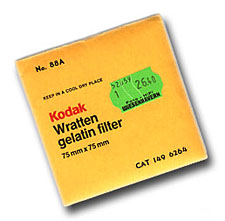 |
Figure 18. Kodak supply a range of infrared transmission filters as gelatine squares - part of the extensive, and famous, Wratten series of filters. Image © Marco Pauck. |
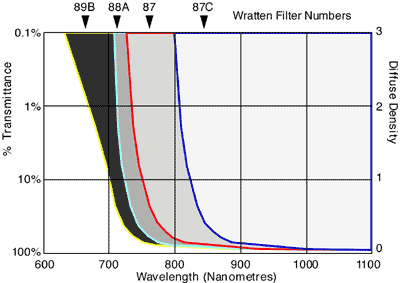
Figure 19. The spectral transmission curves for the Kodak Wratten series of infrared transmission filters.
Other manufacturers also supply very efficient and useful infrared filters. B+W, for example, supplies the 092, which has a wide window of transmission from 690nm to 3000nm - equivalent to the Wratten 89B - and is suitable for black -and -white infrared work (Figure 20). They also supply the 093 - equivalent to the Wratten 87C and an 094 with cut off at 880nm - equivalent to the Wratten 87A. Their equivalent of the Wratten 25 deep red is the B+W 090.
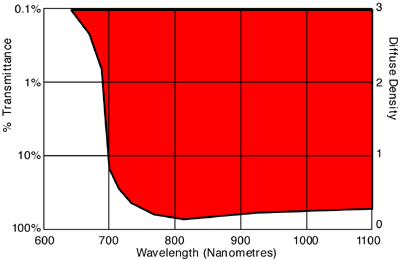
Figure 20. The spectral transmission curve for the B+W 092 IR filter.
Schott now supplies filters which match all of the old Chance Pilkington numbers; so the UG2 and UG5, for example, are the equivalents of the OX2 and OX5. As can be seen from Figure 21 the UG5 also transmits ultraviolet radiation, so a deep yellow (ultraviolet absorbing) filter should be used in combination with this filter.
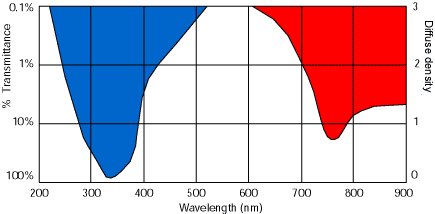
Figure 21. The spectral transmission curve of the Schott UG5 filter.
Hoya have a wide range with the peak sensitivity indicated by the name: the R70 with a transmission wavelength at 700nm, the R72 at 720nm, the R76 at 760nm, the R80 at 800nm, the R83 at 830nm, the R85 at 850nm, the RM86 at 860nm, the RM90 at 900nm and the RM100 at 1000nm. The spectral transmission curves of the Hoya range are shown in Figure 22. Hoya's 25A being the Wratten 25 equivalent, the R72 being the 89B equivalent and the RM90 being the 87A equivalent. (Note that the equivalent Wratten numbers that Hoya states for their filters are not accurate - Figure 23).
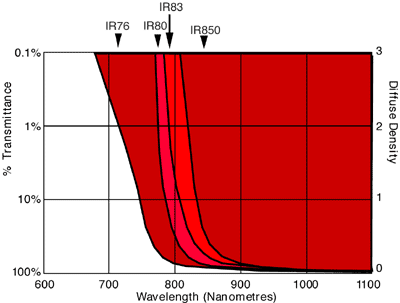
Figure 22.The spectral transmission curve of the Hoya series of IR filters.
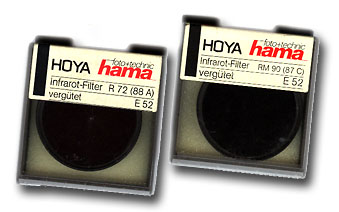
Figure 23. Hoya infrared transmission filters - Note that the equivalent Wratten numbers that Hoya states for their filters are not accurate. Image © Marco Pauck.
Heliopan have an extensive range : the 5715 equating to the 88A, the 5780 equating to the 87, the 5830 equating to the 87C, the 5850 equating to the 87B and finally the 5100 equating to the 87A. They also have a 1025 deep red filter.
Tiffen supplies the T187 which approximates to the Wratten 87 filter in a reasonable range of screw in sizes, whilst Brenner supplies the 8872 infrared filter - which spectrally sits somewhere between the Wratten 25 and the Wratten 89B - in 8x8cm gelatin squares (Figure 24).
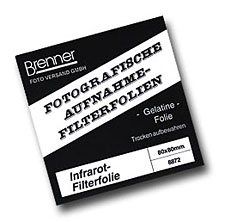 |
Figure 24 Brenner filter from Germany - despite being titled an "infrared filter it is actually a deep red. Image © Marco Pauck. |
Oriel Scientific supplies narrow passband interference filters for use in the infrared region from 750nm to 1300nm in equal increments of 50nm. Although very expensive, these are particularly useful for separating out frequencies into narrow wavebands in document examination, for example.
A number of manufacturers supply cheaper polyester filters, eg. Lee Lighting #87, that are not optical quality but can be used over light sources.
As a curiosity it is also possible to "manufacture" an infrared transmission filter by combining any two of the Wratten tri-colour filters (47 blue, 25 red, and 58 green). As combinations, any of these pairs will transmit freely approximately 700nm upwards, although the 58 and 25 combined have a tiny (5%) transmission at 590nm.
It is perhaps worth noting that all the standard ultraviolet transmission filters pass infrared, so in combination with an effective ultraviolet absorber (such as a Wratten 12 or 15) they become useful infrared filters. (In ultraviolet work the infrared transmission is not ordinarily a problem, as the films used are not sensitive to infrared.) Rutherford (1977) actually recorded both ultraviolet and infrared with a single exposure through a Wratten 87 filter onto high speed infrared film: a technique which has been re-invented by users of modern digital cameras which happen to be sensitive to both UV and IR radiation.
Whichever filter is selected, some kind of holder that allows rapid placement of the filter after obtaining visual focus is essential. The Nikon AF1 holder is ideal for this purpose as it attaches to the filter thread of the camera lens; the front portion containing the actual filter can then be swung up and down as required (Figure 25). An alternative is the Kodak Pathe Porte-filtre Professionel shown in Figure 26, which allows one to drop square filters into a light-tight chamber after focussing. If one is prepared to devote a whole camera back to the infrared emulsion - which professional imaging scientists almost certainly are - a neat solution is to fix an infrared absorbing filter between the guide rails of the camera back in the imaging plane. The disadvantage to this technique is that any dust specs, lint, etc will image with clarity on the film. The advantages are that one can use the viewfinder conventionally to frame the image - most useful for 'action' photography of live events and subjects and that one filter works for all the lenses that can be fitted to that camera. Unless one is using apochromatic or mirror lenses a focus shift still needs to be applied so the method is not entirely ideal for action photography. It is nonetheless a most useful technique.
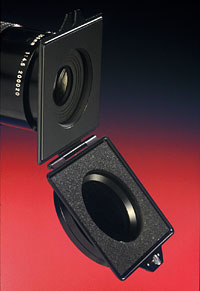 |
Figure 25. The Nikon AF-1 filter holder for the 105mm Micro Nikkor which swings into place once the visual focus has been established. |
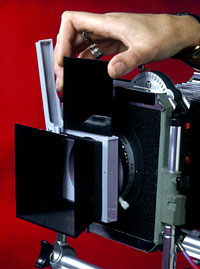 |
Figure 26. The Kodak Pathé filter holder designed so that the visually opaque filters can be quickly dropped into place. |
The infrared Ektachrome colour film requires special filtration of its own. The three emulsion layers of this film are all sensitive to blue, so a deep yellow filter is required over the camera lens to remove this sensitivity, eg., a Wratten 12 (Figure 27). In addition, however, it may be necessary to use other colour compensating filters to avoid incorrect colour bias. It is advisable to test all batches of film individually. Gibson et al. (1965) showed that the usual guidelines for removing colour casts in the subtractive process could not be used with this false colour film. The following table shows Gibson's recommendations:
| Colour Cast | CC Filter to use |
| Green (Needs more magenta) Yellow (Needs more blue) Cyan (Needs more red) Blue (Needs more yellow) |
Cyan Series 1 Cyan Series 2 Blue Magenta |
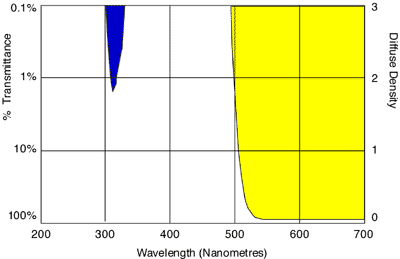
Figure 27. The spectral transmission curve of the Wratten 12 filter used with Kodak infrared Ektachrome to stop all three layers of the emulsions tri-pack being exposed by blue light.
Michel Wurtz has web authored an excellent article on colour balance and Kodak infrared Ektachrome.
| © 2002 Prof. Robin Williams and Gigi Williams - Disclaimer URL: http://www.medicalphotography.com.au/Article_03/ Last modified: 29 July 2003 |